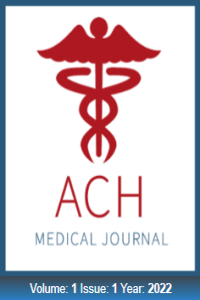The role of 48-hour CRP/albumin ratio in the differential diagnosis of interstitial and necrotizing pancreatitis
The role of 48-hour CRP/albumin ratio in the differential diagnosis of interstitial and necrotizing pancreatitis
Introduction: In this study, we aimed to examine the prognostic importance of the c – reactive protein (CRP)/albumin ratio in predicting acute necrotizing pancreatitis. Methods: The study included 100 patients diagnosed with acute interstitial pancreatitis and 50 patients diagnosed with necrotizing pancreatitis between 2015 and 2020, all over the age of 18. Results: The CRP/albumin ratio was higher in the acute necrotizing pancreatitis group compared to the interstitial pancreatitis group (94.0 vs 34.0; p <0.001, respectively). Multivariable analysis revealed CRP/albumin ratio [OR: 1.075 (1.029-1.123), p = 0.001], source of infection [OR: 4.698 (2.078-10.620), p < 0.001], and lactate dehydrogenase [OR: 1.006 (1.002-1.010), p = 0.004] to be significantly predictive of developing necrotizing pancreatitis. A prediction value of CRP/albumin ratio >70.6 was found to be a significant marker in predicting necrotizing pancreatitis (Sensitivity: 76.0%; Specificity: 85.4%; AUC: 0.881; p < 0.001). In addition, to demonstrate the nonlinear relationship between CRP/albumin and the probability of necrotizing pancreatitis, cubic spline regression analysis was applied, showing that the probability of necrotizing pancreatitis increased in relation to the increase of the CRP/albumin ratio. Conclusion: We conclude that the CRP/albumin ratio is a predictor of acute necrotizing pancreatitis. We believe that the CRP/albumin ratio is an inexpensive, sensitive, and easy-to-use predictor of acute necrotizing pancreatitis that can be used for both diagnosis and treatment follow-up.
Keywords:
Acute necrotizing pancreatitis, Atlanta classification, BISAP, Glasgow Pancreatitis Score Ranson criteria,
- Başlangıç: 2022
- Yayıncı: Ankara Şehir Hastanesi
